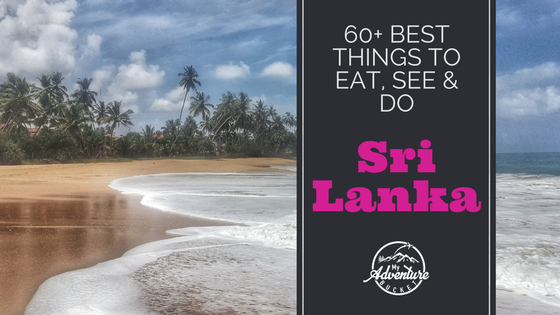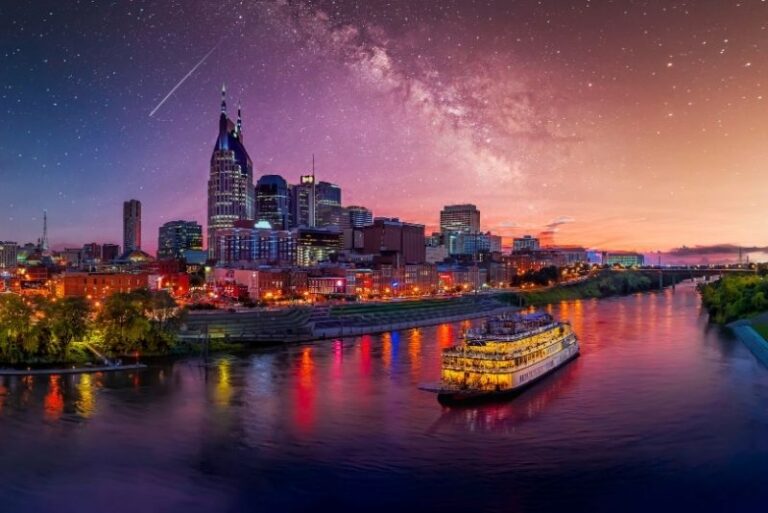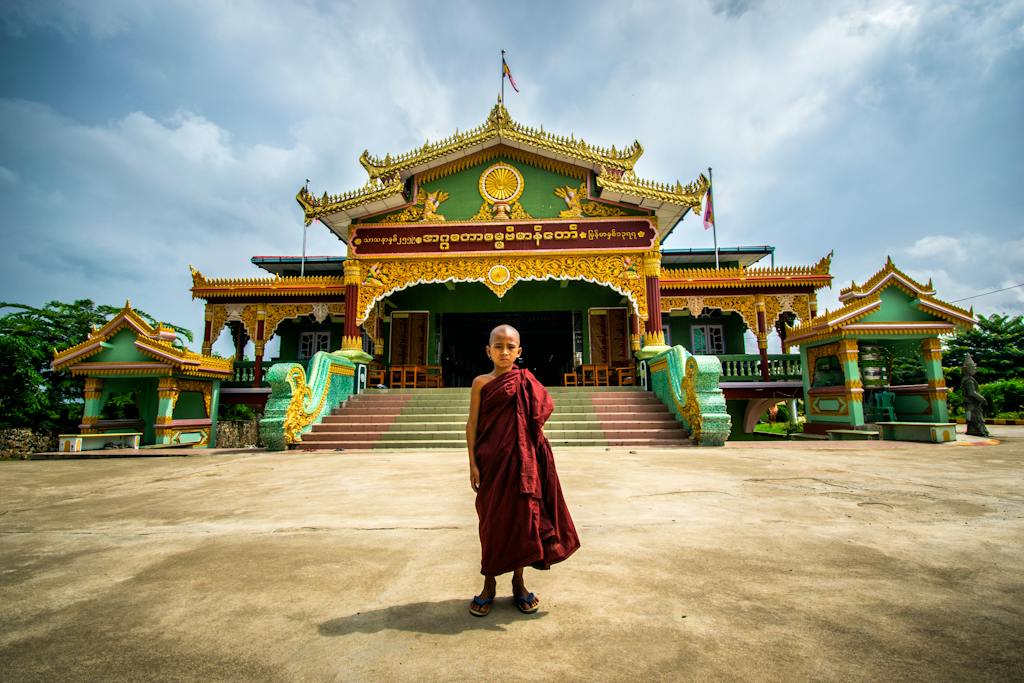Rudyard Kipling is a Terrible Travel Agent
Adventure Bucket employs affiliate links in some posts. I feature only products I trust. Clicking and purchasing through these links may earn me a commission at no extra cost to you.

“This is Burma, and it is quite unlike any land you know about.” – Rudyard Kipling
(Posts on My Adventure Bucket may contain affiliate links. Using these links when you shop helps support the running of this site, and earns you my undying appreciation!)
Today’s the day. The entire reason I’m on the other side of the world. My driver, Zaw, will be picking me up early (surprise) for the 7 a.m. train to Mandalay. Yes, I know it’s “Travel the road to Mandalay,” but the poem was talking about a boat, anyway. Traveling the railroad tracks to Mandalay will be just as good, I’m sure. On the ride to the station, Zaw expresses amazement that I would rather take an 8 hour train ride than a 30 minute flight to the former capital. “Your airlines are run by the corrupt government and I won’t give them any more money than absolutely necessary. Also they have horrible safety records.” He’s astounded that an outsider knows so many things about his country.
We arrive at the train station only to find out that the overnight train from Mandalay has not appeared. Zaw goes to find out how much of a delay to expect while I wedge myself into a tiny plastic chair and swat mosquitoes. Finally he returns. “Now they do not expect the train to arrive until 2:00 p.m. and leave again for Mandalay at 4:00. Will that be OK for you?” Um, no.
Apparently my only other option is a 7 hour bus ride, so we race to the bus station in Nyang U, thinking this also departs at 7:00. The bus actually doesn’t leave until 8:00 a.m., so I’m there in plenty of time. Seated next to me on the bus is a very old Burmese woman with obvious motion sickness. She keeps a handful of jasmine pressed over her face the entire time. At ten a.m. we stop at one of the ubiquitous roadside curry stands for lunch. I have a remarkably good beef curry and a Coke for $1.80.
397
We finally pull into the Mandalay bus station (actually just a large dusty parking lot) at 2:30 p.m., where another driver is waiting to take me to the Silver Star Hotel. The road to Mandalay? Not that impressive, actually.
The view from the bus
The first thing I notice about Mandalay is the pervasive dust everywhere. Everything is so dry and covered in dust- cars, buildings, people. Everything. I don’t know where Kipling’s flyin’-fishes are, or the misty rice paddies. I’m coughing like crazy from the dust and feeling absolutely disgusting from the long sweltering bus ride. As soon as I check into the hotel I take a desperately needed shower- with ice cold water. The hot water heater isn’t working, the front desk clerk tells me with an apologetic smile. Oh, and the Internet is out- has been all week. Probably won’t be up any time soon. Welcome to Mandalay!
Turns out, that jerk Kipling never even visited Mandalay. That’s absolutely the last time I take travel advice from a long-dead English poet.
My first impressions of Mandalay don’t get any better after I leave the hotel and wander down to the local market. The streets are so full of garbage and human waste, I actually gag a few times. I’m shocked to see stalls full of adult videos and magazines; being a Buddhist country, this is very unexpected. It’s getting dark and the male stall keepers are openly leering at me, so I hightail it out of there.
I’m hungry, though, and not ready to call it a night until I find two places recommended by my Lonely Planet guide. One is a no-name chapati stand on the side of the road and I spot it from a block away. There is a throng of people crowding around to watch the chapati-maker flipping the hot bread on his griddle. Smoke rises up to mix with the clouds of dust from the street. There are no signs and I have no idea what the ordering process is, so I stand on the edge of the crowd looking hungry and hopeful until a boy of about 8 or 9, cigarette dangling from the corner of his mouth, comes over and points to an overturned plastic bucket in front of a tiny table.
I feel like I’m sitting on dollhouse furniture.
Food magically appears in front of me: a big bowl of chicken curry, steaming plate of chapatis, and some sort of unidentifiable (but amazingly good) vegetable curry. I could sit and eat this all night. There is traffic whizzing by right next to the cluster of rickety little tables, but no one seems to notice. We’re all just eagerly shoveling chapatis and curry into our faces with wild abandon. I’m heartbroken when I get so full I can’t eat any more. This was the best meal of my life, eaten on an overturned plastic bucket on the side of a dirty road in a filthy town, and it cost $1.36. This is what you should be writing poetry about, people.
I still dream about this meal.
Walking three blocks from the chapati stand gives me enough room for ice cream, though, and this is the second redeeming quality of Mandalay: Nylon Ice Cream Bar. Probably the closest thing to a western ice cream shop I’m going to find in this country, it is a welcome oasis from the brain-melting heat. Apart from the fifty cent dish of strawberry ice cream, I also take my life into my hands with a glass of water from the jug on the table. Not on purpose- it’s just so hot and dusty my brain isn’t working properly and the jug of ice water looked like a mirage in the desert. I have a stomach ache for about ten minutes, but that’s it. Apparently I’m invincible.
Thursday morning I meet my driver for a tour of Mandalay’s most famous sights. Our first stop is Mahamuni Paya, one of the most famous Buddhist sites in the country. It’s a major pilgrimage site and the center of a huge annual festival. Or so the guidebook says- what I saw were homeless people sleeping on festering piles of garbage and crying, hungry children begging for food while oblivious men rubbed more gold leaf on a statue.
We also go to Kuthodaw Pagoda, or “The World’s Largest Book” and Shwenandaw Monastery. The pagoda is interesting, but hard to appreciate when you have to push your way through crowds of beggars and step over piles of maggotty garbage to get in. The monastery itself is an incredible series of intricate wood carvings, but it’s still an active monastic site and I have no interest in shoving my camera in some poor monk’s face while he tries to eat, as I saw another tourist do.
419
Driving from the monastery to our next site, a small child in rags approaches my side of the car. His face is a mass of horrific burn scars and one eye socket is glaringly empty. He grabs at the side of the car with one disfigured hand while holding out a cup with the other. “Try not to look,” my driver says quietly. “You can’t give him money- if you do, hundreds of others will swarm the car.”
I’m sure he’s right, but I can’t look away from the poor boy with the ruined face. “His parents did that, you know,” the driver says as we pull away. He shrugs at my horrified look. “With boiling water. The more badly disfigured they make their children, the more pity foreigners will have and will give them more money.” Imagine the utter desperation that would make you resort to pouring boiling water on your own child in hopes it will result in enough handouts to feed him.
Life lesson: reading about a place rarely prepares you for the reality of it. Don’t just take Kipling’s (or my) word for it: go and see the world for yourself.






